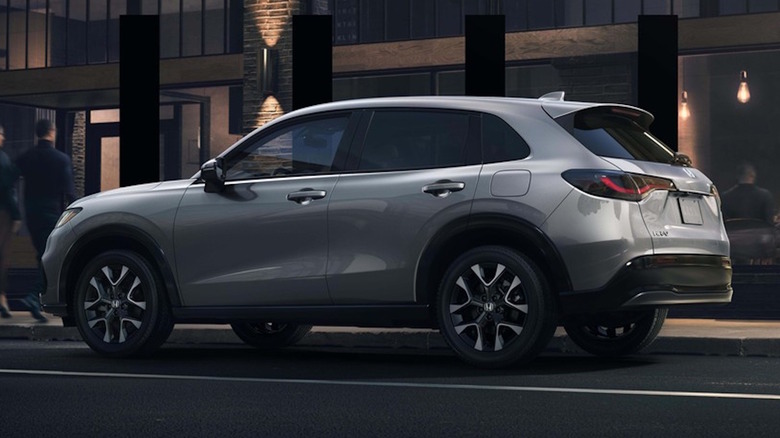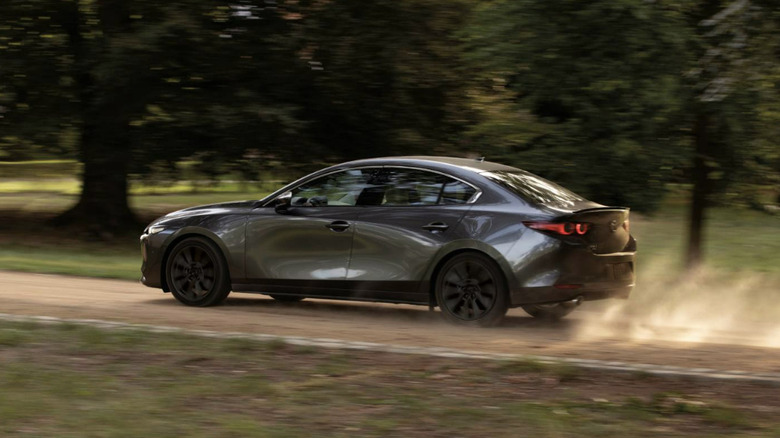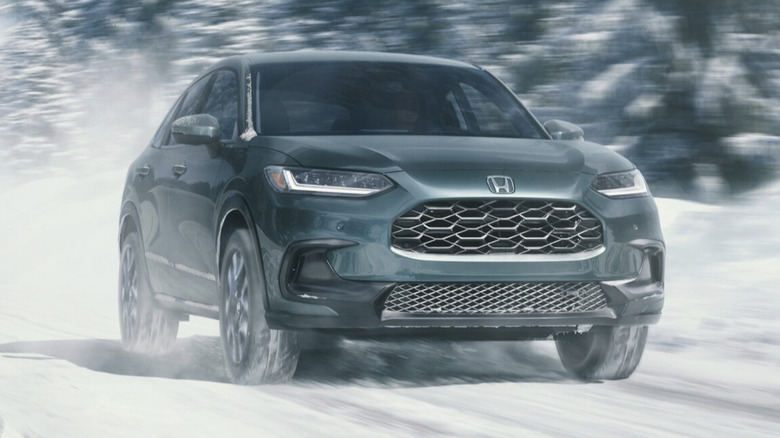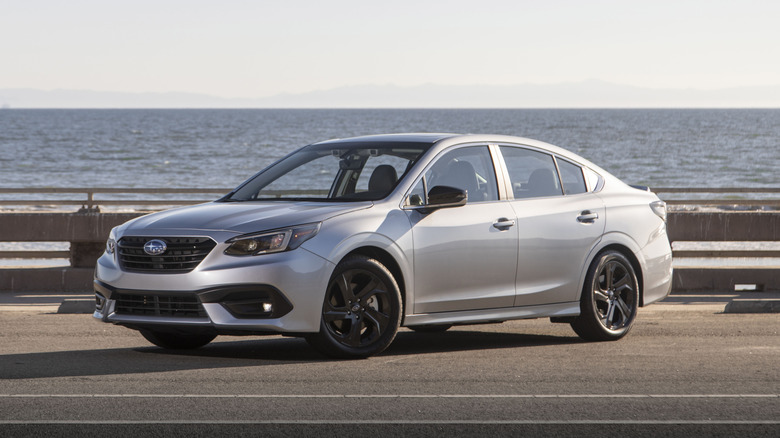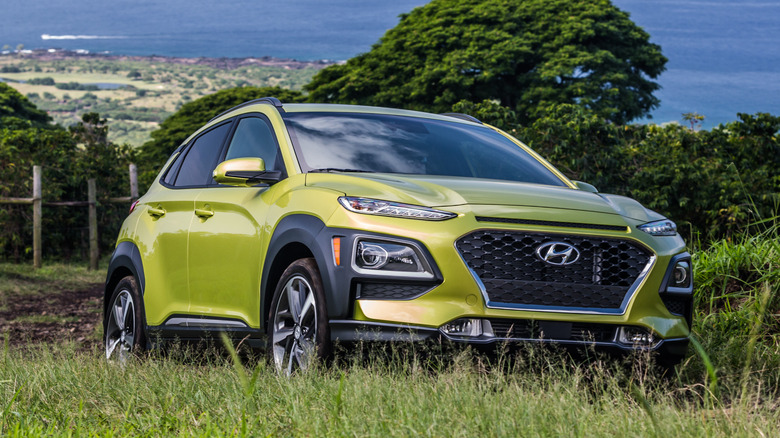5 Of The Safest Car Models For First-Time Drivers
If you're shopping for a car for a new driver, safety should be at the top of your list. But safety today means more than just crash protection—it's also about avoiding accidents in the first place. Most modern vehicles now come with features like forward collision warning (FCW) and lane departure warning (LDW) to help prevent crashes before they happen. The National Highway Traffic Safety Administration (NHTSA) reports that automatic emergency braking (AEB) has cut front-to-rear collisions in half. So, forget the outdated idea of putting a teen in a heavy old "tank"— here are five of the safest cars for first-time drivers that combine solid crash ratings with smart tech.
The criteria include vehicles that rank highest (Top Safety Pick+) in testing by the Insurance Institute for Highway Safety (IIHS) and received a five-star (out of five) overall safety rating from the National Highway Traffic Safety Administration (NHTSA). Another requirement is that every car on this list has blind-spot monitoring and rear cross-traffic alert as standard or optional equipment. These technologies are especially critical for novice drivers who haven't fully developed the habit of checking mirrors or looking both ways before backing up. And because not everyone can afford a new car, we've compiled a mix of fresh-from-the-showroom and second-hand examples that have high safety marks and advanced driver assistance technology.
2025 Mazda Mazda3
Despite the clunky name, the Mazda Mazda3 checks many boxes for new drivers. Not only did the Mazda3 ace IIHS and NHTSA crash tests, but it also received a five-star rating in government rollover evaluations. Notably, the IIHS score applies to the sedan and hatchback versions of the Mazda3, which is something the 2025 Honda Civic can't say. In addition, blind-spot monitoring (BSM) and rear cross-traffic alert (RCTA) are standard on all 2025 Mazda3 trims, unlike the 2025 Toyota Corolla. Meanwhile, the Mazda3 can be equipped with rear automatic braking, another potential accident-saver.
With a starting MSRP of $25,335 (including an $1,185 destination charge), the Mazda3 Sedan is almost half the cost of the average new car. The hatchback version adds $1,000 to the total. For shoppers looking beyond the basics, the 2025 Mazda3 Turbo Sedan is surprisingly quick, with a zero-to-60 mph time of 5.6 seconds, helped by the standard all-wheel drive. Mazda offers a dizzying array of trims— 13 altogether between the two body styles.
2026 Honda HR-V
Whether the 2025 Honda HR-V earns "cute ute" status is in the eye of the buyer. However, one thing not in dispute is the HR-V's stellar safety ratings. It passes the IIHS and NHTSA crash test evaluations with flying colors. The automaker packs numerous standard safety features under the Honda Sensing moniker, including the usual aids such as FCW, AEB, BSM, RCTA, and LDW. Included with the alphabet soup of tech is traffic sign recognition and traffic jam assist, which could be helpful to a driver getting comfortable behind the wheel. The reported zero-to-60 mph time of 9.4 seconds may seem like a turn-off, but it's ideal for deterring stoplight challenges and other throttle-dependent activities. For the 2026 HR-V, it also gets several technology and design updates.
Starter SUVs do come at a premium compared to entry-level sedans and hatchbacks, but the base 2026 HR-V slides in well under $30,000. The LX trim in a front-wheel-drive configuration stickers at $27,595 (including a $1,395 destination charge). For added safety, upgrading to all-wheel drive costs an extra $1,500. A fully optioned HR-V with leather upholstery, all-wheel drive, and a moonroof stickers at $32,945.
2020 Subaru Legacy
What the Legacy lacks in excitement is made up for with practicality, an essential component of a safe vehicle for a beginning driver. Like most Subaru models, the 2020 Legacy comes standard with all-wheel drive. It also features the company's EyeSight driver assist system, which includes FCW, AEB, LDW, and adaptive cruise control with lane centering. IIHS and NHTSA crash test results are also top-notch. Blind-spot monitoring and rear cross-traffic alert are standard on the Limited, Limited XT, and Touring XT trims. However, you should double-check if shopping for the Premium and Sport editions, which came with these features as options. BSM and RCTA weren't available on the base trim.
A used 2020 Legacy in the Limited trim with fewer than 60,000 miles should cost around $20,000 to $22,000. The 2019 model year gets equally good safety scores, comes similarly equipped, and should cost a couple of thousand less (depending on miles and trim). Keep in mind that the 2019 Legacy had a different trim lineup, with BSM and RCTA optional on the Premium variant and standard on the Sport, Limited, and 3.6R Limited editions.
2019 Hyundai Kona
The Kona's modest size makes for a manageable driving experience, especially in urban and tighter suburban settings. Despite its subcompact status, the 2019 Kona earned the highest ratings in IIHS and NHTSA crash tests. However, it's worth mentioning that only the top-tier (Limited and Ultimate) trims earned the Top Safety Pick+ designation, as these versions come with LED headlights.
Forward-collision warning and lane-keeping assist are standard on all 2019 trims, including the base SE variant. The SEL, Limited, and Ultimate editions also feature blind-spot monitoring and rear cross-traffic alert, which aren't available on the SE trim. IIHS and NHTSA didn't evaluate the Kona Electric for this model year.
Shopping for a used 2019 Kona in the Limited or Ultimate trim with under 70,000 miles means having a budget of about $16,000 to $18,000. The lower trims will cost $1,000 to $2,000 less, but the better illuminating LED headlights aren't on the equipment list and don't have the high IIHS rating.
2016 Toyota Camry
Similar to selecting an older Subaru Legacy or Hyundai Kona, choosing a second-hand Camry that meets top safety requirements requires some precision. The 2016 model year offers a good blend of value and technology, but advanced driver assistance systems (ADAS) that enable the highest IIHS rating were optional and available only on select trims. The hoops you'll need to jump through include looking for an XLE, XSE, or Hybrid XLE trim with the optional Technology Package, which adds FCW, AEB, LDW, adaptive cruise control, and automatic high beams. BSM and RCTA are optional on the same trims. The good news is that these are higher-end trims—the new driver will be surrounded by Camry-style luxury.
A 2016 Camry meeting these qualifications will cost between $15,000 and $20,000 for an example with under 100,000 miles. Importantly, don't assume that every XLE (including the hybrid variant) and XSE trim has the extra safety equipment. You'll want to confirm these details, possibly by taking the car to a Toyota dealer.
